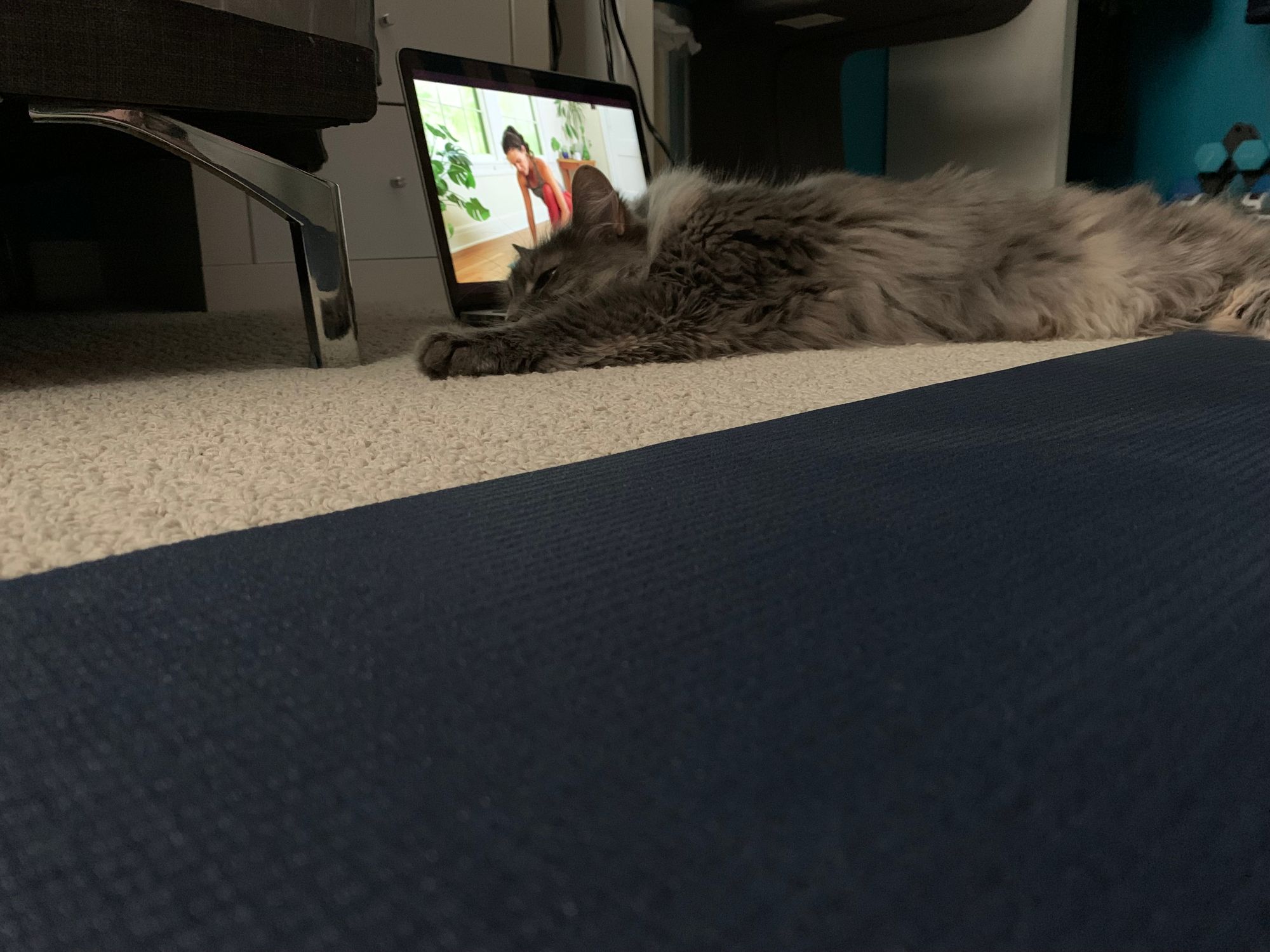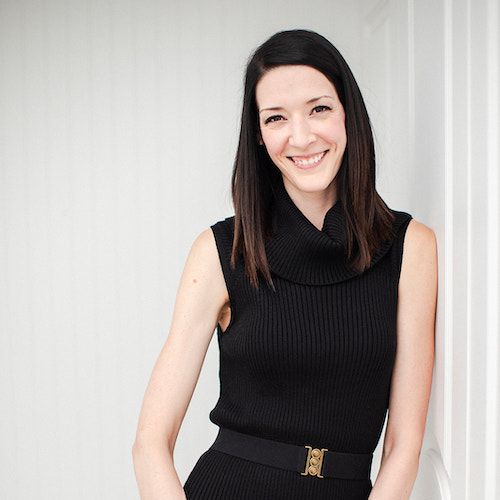I Worked Out 2000 Days In A Row, Here’s What I Learned
It started with my MS diagnosis but became an important daily habit. Over 2000 days of daily fitness later I've learned a lot about what I like and how to keep it going.

I’ve written before about how I first started my fitness streak on January 1, 2018.
The TLDR is that I felt depressed after being diagnosed with Multiple Sclerosis. My body felt out of my control and the future I had imagined for myself no longer seemed possible. All of the worst-case scenarios of a complicated and frightening condition were rolling through my mind, scaring the $%&@ out of me.
I decided I needed to do something to take back some control of my body and it started with a 30-day yoga challenge.
30 days turned into 60, turned into 90 and so on.
Everything after that was about keeping it going, trying new types of fitness, and making movement part of every single day. It continued to be a way to have some agency over my body even on my worst days and eventually became a point of pride.
More than five and a half years after my diagnosis I’m still going strong. Even when I didn’t feel well, even when I felt terribly sad, even when my home was a disaster, even when life was hard.
Over 2000 days of fitness in a row, here’s what I’ve learned.
1. Start small, any type of movement will do
When I say fitness or working out, I mean any kind of intentional movement for an amount of time you can commit to. Starting anything is often the hardest part so pick something small that you can make work in your life right now.
I started with a 30-day yoga challenge. At the time, I had only tried yoga a few times so I was completely unfamiliar with the poses and their names. I most definitely lost my balance and fell over several times as I figured it out (I occasionally still do!) but I was able to commit to 15 to 30 minutes each day as I learned. I didn’t need anything but a mat and a space to do it. I watched a Youtube channel (Yoga With Adriene) with videos I could easily follow.
It was something I could fit into any day, no matter how full, and do it in the comfort of home.
Could you commit to some kind of movement every day, for 30 days, for 15 minutes per day? What would that look like?

2. Decide ahead of time what you’re going to do and when you’re going to do it
Instead of having to make the decision of what kind of fitness I do every day, I look at my week and plan when different kinds of workouts fit best, given what I know about my schedule.
Things I consider:
- The weather forecast. If it is below -10C (14F), above 20C (60F), or super windy (or recently smoky!) I will plan on an indoor activity, otherwise, I try to get into the fresh air as often as possible.
- Exercising/resting different parts of my body on different days. If I do a lower body focussed workout one day, the next will be upper body.
- How much time I have available. Runs are a larger time commitment than something like yoga or pilates so those are my go-to if I am short on time.
- The time of day. I am at my lowest energy and motivation around 4 pm so I never plan workouts for then.
- Type of commitments that day/week. If I am scheduled to deliver a talk, workshop, or webinar then I will always schedule a yoga session for first thing in the morning. It helps prep my mind and body ahead of time-- and I know I will be too tired for anything afterwards.
- How I feel. If I’m sore or not feeling well, I always default to yoga. I can choose to do a gentle, easy session and they always make me feel better.
This seems like a long list but it's a quick thought exercise to run through these things. Then you slot your fitness into your calendar as best you can, given what you know is coming up.
It won’t always be perfect, life will happen, the weather will change, or how you feel will change. That’s fine, just roll with it! Choose your default workout for when things go sideways.
It’s WAY easier to commit to the workout when the decision has already been made and you just have to go do it.
3. You might surprise yourself with what activities you like
For most of my life, I firmly believed “I am not athletic” and “I don’t like fitness”.
But the truth is that I didn’t need to be athletic (though it turns out I am more athletic than I thought) and I just had to find what I did like by experimenting a little.
Over the years I learned things like:
- I like solo activities over group or team activities
- I’m not competitive and am not motivated by competing against others
- I like lifting free weights but not going to a gym
- I like outdoor running, but only alone
- I like winter outdoor running 🥶 (under certain conditions!)
- I am not interested in running races or marathons
- I don’t like rowing
- I don’t like HIIT
- I like riding a stationary bike but have to have something to watch or it’s too boring
- I like solo hiking, despite having a terrible sense of direction 😅
With each new experiment, I was able to see what felt good and fit into my life. Knowing these things made them easier to stick to.
You might be the opposite. You might find team sports and being around others motivating and enjoy the competitive spirit. You might enjoy the community aspect of a gym, going to a regular class, or the challenge of training for something.
How can you know if you don’t give it a try?!

4. It’s easier to workout when you connect it to something you enjoy
I love to read, I love stories, and audiobooks make whatever fitness I am doing feel like it goes faster, is less boring, and it provides a good mental break. I always want to know what’s going to happen next so it’s a great motivator to keep it up!
If I’m watching a video for a strength or pilates workout, I mute the video and visually follow along (often it’s videos I’ve done before) while I listen to the audiobook. If I’m going for a run, it’s with me to focus on instead of my tired legs or burning lungs. If I am on the bike, I keep a Netflix show in mind to watch.
What could you do while you work out that makes it more fun? Listen to a podcast or audiobook? Watch TV or a movie?
5. Being consistent is more important than anything else
Another way I keep up working out every day is by making the mental commitment to not skip, regardless of what is happening in my life or how I feel.
My reasoning is:
- There hasn’t been a situation where I can’t make 15 minutes of stretching happen, even on my worst days, when travelling, or when things feel tough.
- I always, always feel better after exercise. Instead of cutting a workout when things are rough or I don’t feel good, it makes more sense to keep it.
- Skipping once or twice makes it easier to fall out of the habit. It’s often harder to start something than it is to keep going.
- Keeping the streak is a good motivator to never miss.
- Being consistent and doing some kind of workout every day changes the decision from IF I will do something to when and what.
I will add the caveat that of course there are circumstances where a skip is necessary. I haven’t had any such circumstances since I started, but that doesn’t mean it won’t happen.
There is absolutely no shame in missing or needing to skip, you just start again and keep going.
What daily movement could you do consistently, given the other circumstances in your life?
6. “I don’t have time” is (usually) not quite true
As I have said many times before, time is not really the problem for most of the things we are trying to fit into our lives. We all have the same amount of time. It’s that there are too many priorities to juggle and fitness is not something that you are prioritizing.
There are lots of completely valid reasons why that might be the case and that’s ok!
My point is that saying you don’t have enough time can be a convenient excuse. Be honest with yourself if fitness doesn’t fit into your life because of other priorities, or if you are simply not prioritizing it. If you are not prioritizing it, think about why that might be the case.
What could you change to reprioritize some kind of movement into your daily routine?
7. It’s one of the best things you can do for productivity
I wrote two whole articles on why exercise is good for productivity:
- Exercise is a Productivity Tool Part 1: Breaking Down the Untrue Stories We Tell Ourselves
- Exercise is a Productivity Tool Part 2: How to Add Daily Exercise to Your Productivity Toolkit
The gist: it’s good for your brain, body and mental health! If you need more convincing, check out these studies:
- Reduce stress
- Elevate mood
- Increase concentration and focus
- Improve sleep
- Increase mental stamina
- Enhance creativity

8. It helps to track it and share it
I use a simple app on my iPhone called Streaks to track my workouts each day. Streaks syncs with Strava (for runs/walks) and Apple Fitness for everything else. I also track which types of workouts I do so I can remember how often I do different types.
In case you haven’t noticed, I like to track things! I like seeing that number of days in a row get bigger. I like seeing that I did a run 2-3 times a week over the course of a month. It’s a visual, tactical, reminder that I am doing what I can for my body and mind, every damn day.
In addition to tracking, I have a fitness buddy. My sister-in-law (and one of my besties) Patti and I follow each other on Strava to help motivate and encourage one another. Every so often I will see that Patti went for a run and it pushes me to drag my butt out when I am feeling a little unmotivated!
I am really proud of my fitness streak. It’s been an interesting journey as I shifted the way I thought about myself and what I was capable of. Turns out I am athletic. I am flexible. I am a runner. I am a winter runner (😳).
There are plenty of things in my life that I can’t control, like having MS, but this is something that I can.
I am committed to taking some time for myself, every single day, to move.
Will you do the same?
Do you need to make a change but don't know where to start? Let's chat.
Share
Ashley Janssen

Productivity consultant, writer, speaker, serial entrepreneur, chaos calmer, introvert, cat-lady. Lover of books, fitness, old fashioned’s, basketball, and video games.
Follow me on
Twitter
or
LinkedIn.
Hire me for
1 on 1 productivity consulting
or
speaking.
Related articles

A Look Back On Some Old Favourites

40 Days To 40


Comments ()